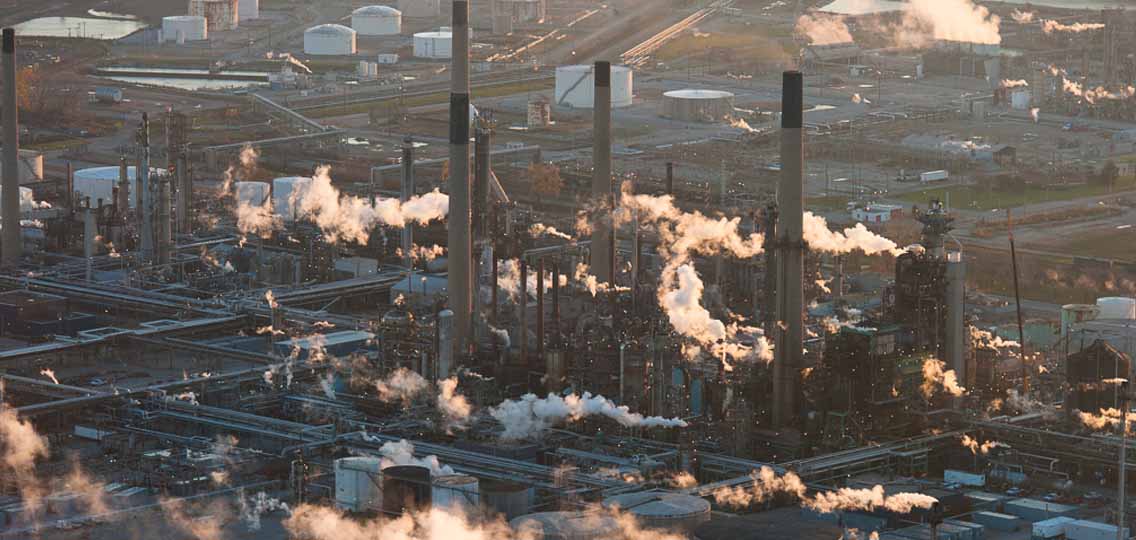Ecojustice (formerly Sierra Legal) released an investigative report today that for the first time documents the staggering amount of air pollution released from industrial facilities around Sarnia, Ontario: Canada’s Chemical Valley.
The report reveals that there are 62 large industrial facilities within 25 kilometres of the City of Sarnia and adjacent Aamjiwnaang First Nation reserve. In 2005, these facilities in Canada’s Chemical Valley released more than 131,000 tonnes of air pollution – a toxic load of more than 1,800 kilograms per Sarnia and Aamjiwnaang resident.
“What is particularly striking about the air pollution in the Sarnia area is the immense quantity of toxic chemicals emitted,” said Ecojustice Senior Scientist and report author Dr. Elaine MacDonald. “In 2005, these facilities released more dangerous chemicals –- substances associated with cancer and respiratory and reproductive disorders — than the industrial releases from the entire provinces of Manitoba, New Brunswick or Saskatchewan and greater than any other community in Ontario.”
Located at the southernmost tip of Lake Huron, at the border between Ontario and Michigan the region’s cluster of heavy industry is home to 40% of Canada’s chemical industry.
The report analyzed data collected under Canada’s National Pollutant Release Inventory (NPRI) and the U.S. Toxic Release Inventory (TRI). Under these programs, large industrial facilities on both sides of the border are required by law to provide information to government each year documenting their emissions of certain air pollutants. The report is the first-ever documenting the extent of air pollution data in the Sarnia area using these two registries and the Canadian Greenhouse Gas Reporting Program.
“For decades pollutant levels have been high in Aamjiwnaang due to the industry around us. It is the cumulative impact of air pollution from facilities on both sides of the border that has made the Sarnia area one of Canada’s worst pollution hotspots,” said Chief Chris Plain of Aamjiwnaang First Nation. “Clearly this report highlights the need for greater action by governments to ensure our community members’ health is protected.”
On the Canadian side the 46 facilities listed under the NPRI release more than 132,000 tonnes of NPRI air pollutants in 2005 – contributing 16% of Ontario’s NPRI air pollution and one fifth of the province’s climate change inducing industrial greenhouse gases. The 16 US TRI facilities contributed an additional 1,900 tonnes of air pollution in 2005.
“These emissions are posing a serious threat to human health,” said Dr. James Brophy, Executive Director of the Occupational Health Clinic for Ontario Workers (OHCOW) in Sarnia. “There is growing evidence that the Aamjiwnaang First Nation and other Sarnia area residents are suffering a host of health problems associated with exposure to these toxic chemicals,” added Dr. Brophy.
The report highlights strategies needed to reduce emissions, such as aggressive pollution prevention efforts, increased enforcement of existing laws, and enactment of tougher regulatory standards. It also recommends that no additional pollutants be added to the airshed and calls on the federal, provincial and local governments and First Nations to work together to take the precautionary steps necessary to improve and protect the health of the community.

